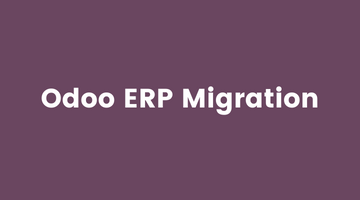Odoo ERP Migration: 4 Tips to Minimize Risk

This blog covers a few tips that can be used to migrate Odoo ERP from older versions to newer versions, and it will simplify the entire process for you so that you don’t have to worry about any of the technical details.
What is Odoo?
Odoo is a free and open source ERP software that’s been designed to be cloud-based. It boasts an extensive list of features, including project management, accounting, inventory control, CRM, sales forecast system, invoicing, and more.
Why do I need to migrate my software?
You may be looking for better functionality, lower costs, or improved user experience. You may be looking for better software that is easier to use and that provides more features to help you improve your business. Whatever the reason, there are plenty of good reasons to migrate your software.
Tips to Minimize Risk
- The main risks in a migration are the data and settings, usability, software compatibility, and hardware compatibility. Make sure to have a backup plan for all your data and settings before you start.
- You’ll want to take time before the migration to test it so that you don’t have any problems when you’re importing your data.
- It’s also worth considering migrating from an old version of Odoo if it’s been a while since the last upgrade because there may have been significant changes in the software that can cause complications when importing from earlier versions.
- The migration process should be planned carefully. You need to identify the assets that are to be migrated, the risks involved, existing vulnerabilities, and how much time is required for the migration.
